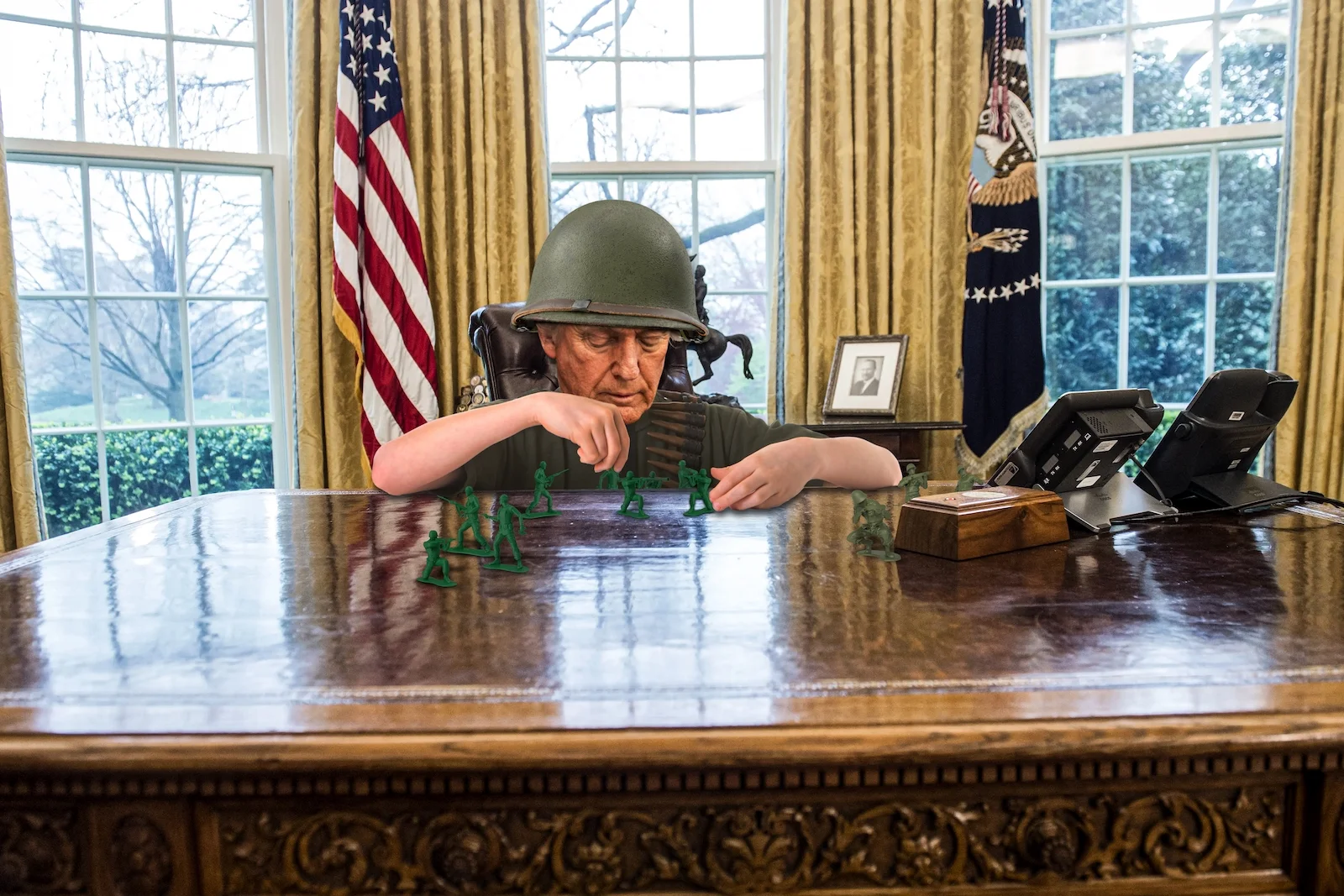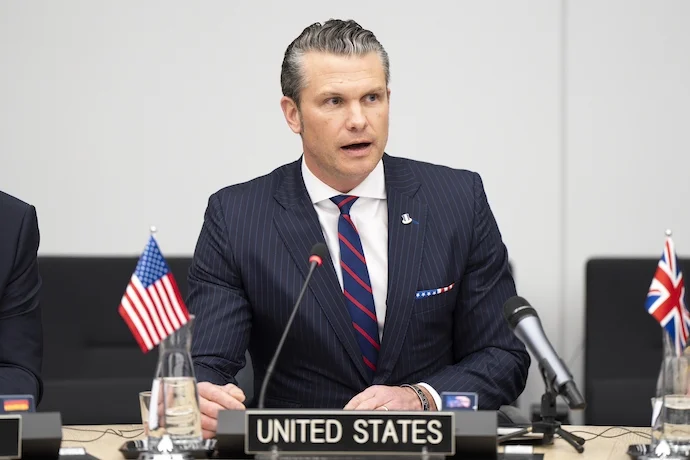
Soldiers and Equipment Might be in Short Supply for a War with Iran
The United States may be edging closer to another prolonged and costly conflict in the Middle East—this time with the Islamic Republic of Iran and its advancing nuclear program. With a firm insistence that Iran must never acquire the capability to build a nuclear bomb, the Trump administration not only issued a deadline for compliance but also imposed a stringent timetable for halting enrichment. At the same time, Washington has begun deploying significant military assets to the region.
If diplomatic efforts collapse, the United States may consider a military option to neutralize Tehran’s nuclear infrastructure. Yet, given Iran’s rigid and mountainous terrain—combined with the high likelihood of fierce retaliation by the clerical regime—any military strike could rapidly escalate into a drawn-out war, one with the potential to trigger regime change and ripple into multiple military engagements across the region.
Nevertheless, a key factor looms: the United States, having alienated many of its long-standing allies, would ultimately require not only its own military manpower but also comprehensive logistical support—base access, intelligence cooperation, and regional staging. In the absence of European assistance, and with its armed forces already overextended, and the administration having culled senior officers, the Trump administration could be forced to activate the Selective Service.

A Brewing Conflict with Iran
The Islamic Republic and the United States have remained at loggerheads since the 1979 Iranian Revolution, which saw the overthrow of the pro-American Pahlavi monarchy and the rise of Ayatollah Khomeini’s hardline theocracy. Seeking a strategic deterrent against perceived threats from the United States and Israel, the Iranian regime has covertly pursued a nuclear program over the past several decades—well beyond the requirements for civilian energy production.
Iran’s Revolutionary Guard Corps (IRGC) has invested heavily in a network of proxies throughout the Middle East, including Hezbollah in Lebanon and Syria, the Popular Mobilization Forces in Iraq, the Houthis in Yemen, and Hamas in the occupied Palestinian territories. These groups have not only been responsible for American casualties but also for undercutting Western influence, destabilizing regional politics, and inflicting economic damage on global supply chains.
By 2024, regional tensions surged to new heights as the war in Gaza engulfed the region in uncertainty. In an effort to relieve pressure on Gaza, the IRGC authorized its proxy forces to engage Israeli interests elsewhere. However, this maneuver only heightened Iran’s exposure, prompting direct military responses.
In April 2024, Israel targeted an IRGC command center adjacent to the Iranian embassy in Damascus, Syria—sparking a series of tit-for-tat strikes between Israeli and Iranian forces. The United States, along with the United Kingdom, France, and a handful of Arab allies, joined in by intercepting IRGC drones and missiles on at least two occasions.
Still, despite divergent national interests, the West maintained a degree of cohesion through 2024. That fragile unity, however, now appears increasingly brittle under the Trump administration’s renewed criticism of allies in 2025.
“All Options” on the Table
In 2025, the Houthis continued their aggressive campaign targeting international shipping, aiming to pressure Western powers into halting Israel’s operations in Gaza. Rather than yield, President Trump ordered a sweeping military offensive against Ansar Allah in Yemen—far more forceful than Operation Prosperity Guardian, which was launched under President Biden in 2024.
Concurrently, the Trump administration resumed its “maximum pressure” strategy on Iran, deploying B-2 bombers to Diego Garcia in the Indo-Pacific and signaling that “all options” remain viable—including direct military intervention. At the same time, Israeli Prime Minister Benjamin Netanyahu has been lobbying the Trump administration for a joint U.S.-Israeli military campaign against Iran, finding a receptive audience in an administration that appears more favorably disposed toward Israel than any other American ally.
Iran’s government, led by Supreme Leader Ali Khamenei, remains deeply unpopular at home. Yet the regime has refused to negotiate, viewing compliance with Trump and Netanyahu’s demands as a sign of weakness. This refusal could further escalate the urgency of military planning in Washington, especially if the nuclear deadline in May passes without resolution.

Ground Troops Would Be Needed
Neutralizing Iran’s nuclear program would require more than airstrikes. Much of Tehran’s missile arsenal, its leadership bunkers, and nuclear facilities are buried deep within rugged and heavily fortified mountain ranges. Even America’s most advanced bunker-busting munitions would face formidable challenges penetrating such defenses.
Complicating matters further is Iran’s population of over 90 million. The regime controls a substantial paramilitary infrastructure, including the IRGC, Basij militias, and other security forces—not to mention the potential to conscript millions of loyalist civilians. In a scenario where the United States attempts a full-scale invasion, estimates suggest a force of between 500,000 to 1 million American ground troops could be required—a level of mobilization not seen since the Second World War.
Further complicating matters is that the Department of Defense is being led by Pete Hegseth, whose only qualifications seem to be an undying loyalty to President Trump and a commitment to stamping out diversity, equity, and inclusion efforts. Under Hegseth’s leadership, several senior officers have been fired for dubious reasons.
The Pentagon announced on Tuesday that Vice Admiral Shoshana Chatfield has been dismissed from her role as the U.S. military’s representative on NATO’s military committee. Her removal marks at least the ninth high-ranking officer ousted under the Trump administration, and she becomes the fourth senior female officer to face such an outcome.
Chatfield joins a growing list of top-ranking officials who have been relieved of duty. Among them are Admiral Linda Fagan, who served as commandant of the Coast Guard; General Charles Q. Brown Jr., Chairman of the Joint Chiefs of Staff; Admiral Lisa Franchetti, Chief of Naval Operations; and General James Slife, Vice Chief of Staff of the Air Force. Also removed were Lieutenant General Joseph B. Berger III, the Army’s top legal officer; Lieutenant General Charles Plummer, the Air Force’s Judge Advocate General; Lieutenant General Jennifer Short, Senior Military Assistant to the Secretary of Defense; and General Timothy Haugh, who led the NSA and U.S. Cyber Command.
Geopolitical instability in the region further compounds the risk. Iran shares borders with nuclear-armed Pakistan and Taliban-controlled Afghanistan—two states with interests in Iranian territory and a volatile mix of extremist groups. Should Iran’s expansive missile arsenal fall into the wrong hands, tensions in South Asia, particularly with India, could erupt with grave consequences.
Iran has been ruled either by the Shah’s monarchy or the Khomeinist theocracy. Any attempt to transform it into a democracy or constitutional republic would require a long-term occupation—something deeply unpopular among the American public. Such an endeavor would likely cost trillions, adding to the growing national debt and exacerbating the economic strain already felt under Trump’s second term.

Amidst Alliance Rift, America Will Lack Allies
Should hostilities escalate to the point of a full-scale war, the United States would need a coalition of nations to provide logistical and ground support, especially given the size and complexity of a military campaign in Iran. The central problem: Washington has spent months undermining and destroying relations with its most dependable allies.
Tensions between the Trump administration and Europe have steadily grown. Despite the fact that 24 NATO members have met the 2% defense spending threshold long demanded by Trump, the administration continues to berate European allies as unreliable. Leaked Signal messages from within the administration reveal deep contempt for Europe, expressed by Vice President J.D. Vance and cabinet officials. Additionally, several diplomatic incidents have soured relations with historically close allies.
During the wars in Iraq and Afghanistan, European nations, along with Australia, the Middle East, and East Asia, provided critical support to U.S. forces. Cultural missteps and insufficient troop levels hampered efforts to stabilize the regions. In Iraq, for instance, coalition forces lacked an understanding of the country’s ethnic and sectarian divisions, allowing insurgent and extremist groups to flourish.
With Iran’s population approaching 90 million, a similar war would require not only large-scale military cooperation from Europe but also robust post-conflict planning. However, European nations, already skeptical of American leadership, are unlikely to back a war that appears to serve primarily U.S. and Israeli strategic interests—particularly if it risks provoking further Russian aggression on their own borders.
Middle Eastern contributions to any coalition would also be limited. Turkey, which possesses significant military capacity, is estranged from Israel and unlikely to cooperate in a U.S.-Israel-led effort. President Erdogan has positioned himself as a champion of Muslim unity, making Turkish participation in such a coalition unlikely.
Other regional allies, such as Saudi Arabia, the UAE, Qatar, and Bahrain, lack the necessary manpower and remain cautious, fearing Iranian missile strikes on their energy infrastructure. Israel, for its part, is already overstretched and could not commit significant forces. Moreover, the deployment of Israeli troops inside Iran would inflame sectarian tensions and bolster anti-Israel militias.
America Would Leave Theaters Wide Open
The Pentagon has already redeployed a carrier group from East Asia to the Persian Gulf. With the Navy facing production delays and modernization issues, such moves create security gaps in other critical theaters. Without allied forces to backfill American deployments, the Trump administration may be compelled to draw from the Individual Ready Reserve and consider activating the Selective Service to meet wartime demands.
Meanwhile, China and North Korea have escalated both their rhetoric and military activity. Any perceived vacuum in the Indo-Pacific would serve their strategic interests, undermining the U.S. position in Asia. In Europe, a redeployment of troops to the Middle East could leave NATO’s eastern flank vulnerable—particularly if Russia finds momentum in Ukraine.
In sum, America’s increasingly belligerent rhetoric toward its allies could come at a steep price. A war against Iran would require extensive coalition-building, logistical infrastructure, and sustained military commitment. With allies alienated, global obligations mounting, and domestic readiness stretched to its limits, the United States may find itself forced to activate the Selective Service—reviving the draft for the first time in generations.
